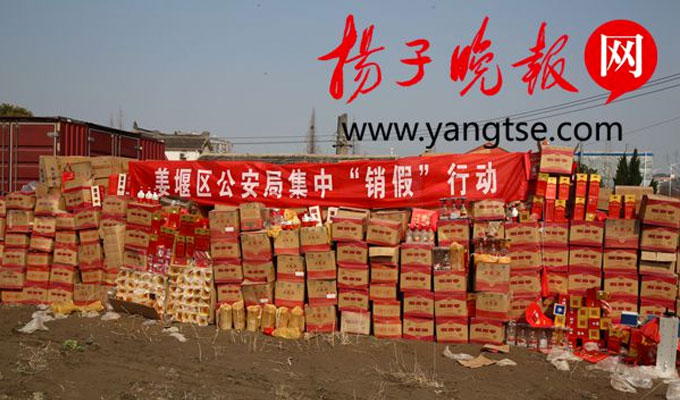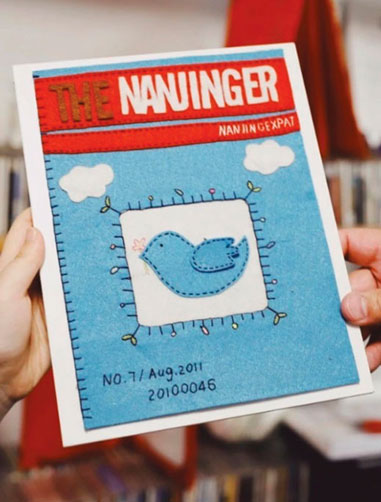Jiangsu is going flat out before the clock strikes 12 on China’s nationwide 3.15 Consumer Rights Day to clear out all “fakes”.
This all encompassing word for anything “non-officially” produced has seen fake designer labels, cars, DVDs, and even tickets sweep through the Middle Kingdom, and all are understood to be classic examples of counterfeit. But then come fake cigarettes, apples, rice and even people…Welcome to the seriously bamboozling territory of China Fakedom.
Kudos to the authorities; over the past 5 years, they have brought widespread recognition to the dangers of said fake products, and have handed down harsh realities to those responsible. This is no overnight cleanup; being tasked with stamping out the manufacture of fake products is monumental to say the least.
It therefore comes as no surprise that to the northeast of Nanjing, in Taizhou city, 1,000 cases of fake spirits have been destroyed. With a value of ¥3 million, the booze comprised counterfeits of famous rice wine brands; Moutai, Wuliangye, Jiannanchun etc. 18 criminal suspects were eventually arrested, reported the Yangtze Evening Post on 12 March.
LA Times reporter David Pierson writes, “Upwardly mobile Chinese, eager to display their wealth and sophistication, have since developed a taste for imported wine along with other foreign luxuries… But the real clamour in China is for high-end French reds, which enjoy unparalleled cachet. A Chinese buyer spent an astonishing $540,000 on a single lot of 300 bottles of Chateau Lafite Rothschild at a Christie’s auction in Hong Kong…Prices like that have proved irresistible for counterfeiters…[and] a cottage industry of bottle scavengers has sprung up to serve the trade. One broker solicits online as a “professional bottle recycler,” offering up to $320 for an empty Lafite bottle”.
It is not only the collectors’ items which are fetching a pretty penny. By some measures, China is already the world’s top consumer of red wine.
The business of counterfeit, is therefore rife. Nanjing Industry and Commerce Bureau reported to Shanghai news outlet, The Paper, that it destroyed ¥330 million worth of counterfeit goods [in 2017]. From over 90 categories, the counterfeit A list included liquor, food, health products, toiletries, clothing, auto parts, building materials and many more.
As a means of exposing the counterfeiters to the public, the Bureau set up a so-called “shoddy goods” show room, to educate in how to identify fake products. In all cases of economic violation investigated by Nanjing city in 2017, there were 409 cases of counterfeiting and trademark infringement, accounting for 39 percent of the total.
Even today, further reported by The Paper, the Nanjing Public Security Bureau, working with the aid of Alibaba’s special counterfeit team, has arrested 21 people in Nanjing’s Jiangning district. The gang had been recycling well-known rice wine bottles and filling them with basement price wine from the local store.
Police confiscated more than 11,700 bottles of counterfeit liquor at the scene, 9 counterfeit liquor manufacturing units were seized and 23 storage outlets were destroyed, together valued at more than ¥13 million.
The government pointed out that, “In order to prevent air and environmental pollution caused by the destruction [of fake products], since 2007, the industry and commerce departments have strictly implemented the requirements of national laws and regulations on environmental protection, and have chosen environmentally-friendly methods for harmless destruction. Enterprises that do not pollute the environment undertake this task”.











